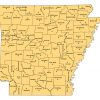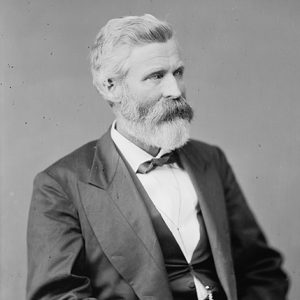calsfoundation@cals.org
Second Arkansas Cavalry (CS)
The Second Arkansas Cavalry was the name of several Confederate units that served during the Civil War. These units are not to be confused with the Second Arkansas Mounted Rifles, which served for much of the war as an infantry regiment.
The first unit to be organized as the Second Arkansas Cavalry was based on the Second Arkansas Cavalry Battalion. After the Battle of Shiloh in Tennessee in April 1862, the battalion was created from independent companies in northern Mississippi. This unit consisted of five companies from Calhoun, Bradley, Jefferson, Dallas, and Ashley counties. In May 1862, the battalion consolidated with the Sixth Arkansas Cavalry Battalion, which consisted of four companies from Drew, Crittenden, and White counties, along with two companies from Louisiana. The battalion was commanded by Charles Phifer, who took command of a brigade of dismounted cavalry units. The new consolidated unit became the Second Arkansas Cavalry Regiment, commanded by Colonel William Slemons from Drew County.
Serving in northern Mississippi in the summer of 1862, the Second Arkansas joined an expedition under the command of Colonel Joseph Wheeler behind Union lines, where the Confederates destroyed railroad bridges and fought numerous engagements. The unit next served in a brigade under the command of Brigadier General Frank Armstrong, fighting a number of skirmishes in Tennessee in late August and early September 1862.
On September 17, 1862, the regiment and a unit of Mississippi cavalry destroyed a Federal train near Burnsville, Mississippi. Two days later, the unit fought at the Battle of Iuka. On October 3–4, 1862, the regiment fought in the Second Battle of Corinth, losing ten killed, sixty-two wounded, and thirty-five missing. On October 5, the unit fought at the Battle of Hatchie’s Bridge and lost one killed, three wounded, and twelve missing.
The Second Arkansas remained in northern Mississippi after the battles, carrying out scouting missions. Two members of the regiment were captured in Oxford, Mississippi, on December 30, 1862. On January 16, 1863, the regiment and four other cavalry units were transferred to the Department of Mississippi and East Louisiana and were ordered to report to Grenada, Mississippi. This transfer moved the regiment from the Army of Tennessee to the army tasked with defending Vicksburg, Mississippi. The unit numbered 207 men at this time.
Moving to the Mississippi Delta, the regiment worked to disrupt Union river traffic. Slemons took command of a brigade that consisted of the Second Arkansas, a regiment from Tennessee, a regiment from Kentucky, and two units from Mississippi. Lieutenant Colonel H. R. Withers took command of the regiment. Firing on transports near Austin, Mississippi, on May 23, 1863, the regiment and a regiment of Mississippi cavalry were engaged by Federal troops landed by a steamer. The Confederates lost three killed, twelve wounded, and three missing, while the Union troops lost two killed and nineteen wounded. The next month, the regiment returned to the river and helped sink or burn two transports in an effort to disrupt the Union supply route to Vicksburg.
Confederate authorities realized that the units raised west of the Mississippi were unable to recruit sufficient numbers of replacement soldiers, and the Second Arkansas moved to the Trans-Mississippi in the summer of 1863 after the fall of Vicksburg. The original plan was for these units to recruit enough men to operate effectively and launch a raid through Missouri, Illinois, Kentucky, and Tennessee to rejoin the army in Mississippi. This did not occur, and the regiment remained in the Trans-Mississippi for the remainder of the war. At least one of the companies recruited in Louisiana remained east of the river, participating in actions in southern Mississippi and Louisiana in 1863.
In September 1863, officers of the regiment were tasked with gathering absent members of the unit from their home counties in southern Arkansas. The regiment joined a brigade along with four other Arkansas units under Colonel William Crawford. The brigade was present at the Skirmish at Prairie D’Ane and fought at the Engagement at Poison Spring, capturing two pieces of artillery. The unit was also present at the Action at Marks’ Mills.
The final campaign that the regiment participated in was Price’s raid into Missouri in the fall of 1864. Serving in a brigade commanded by Slemons, the regiment participated in numerous actions across Missouri and into Kansas. Slemons was captured at the Battle of Mine Creek in Kansas, and the remnants of the unit retreated to Arkansas. The regiment served in southern Arkansas for the remainder of the war and surrendered with the other forces in the Trans-Mississippi in May 1865.
For additional information:
Bearss, Edwin. Steele’s Retreat from Camden and the Battle of Jenkins’ Ferry. Little Rock: Arkansas Civil War Centennial Commission, 1967.
Forsyth, Michael. The Camden Expedition of 1864 and the Opportunity Lost by the Confederacy to Change the Civil War. Jefferson, NC: McFarland, 2008.
———. The Great Missouri Raid: Sterling Price and the Last Major Confederate Campaign in Northern Territory. Jefferson, NC: McFarland, 2015.
David Sesser
Henderson State University
 Civil War through Reconstruction, 1861 through 1874
Civil War through Reconstruction, 1861 through 1874 Counties
Counties Military
Military Reid, Thomas Jefferson
Reid, Thomas Jefferson ACWSC Logo
ACWSC Logo  William Slemons
William Slemons 



Comments
No comments on this entry yet.